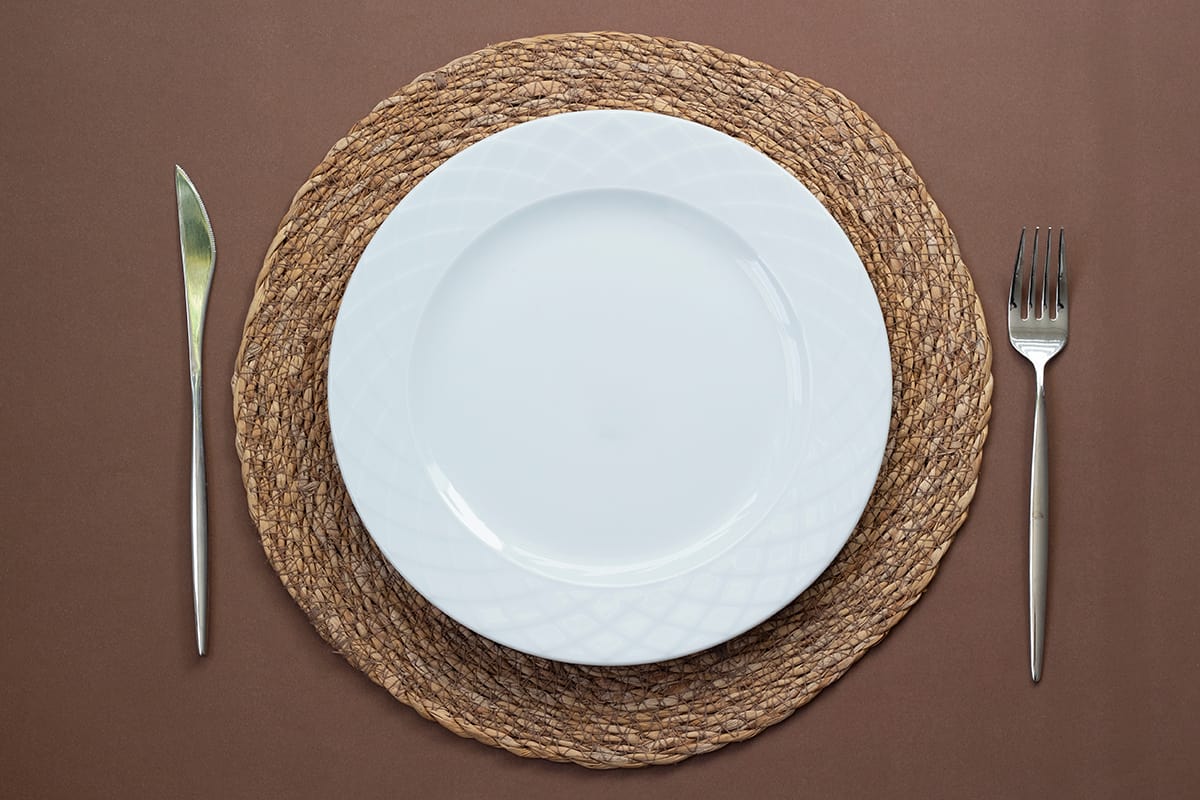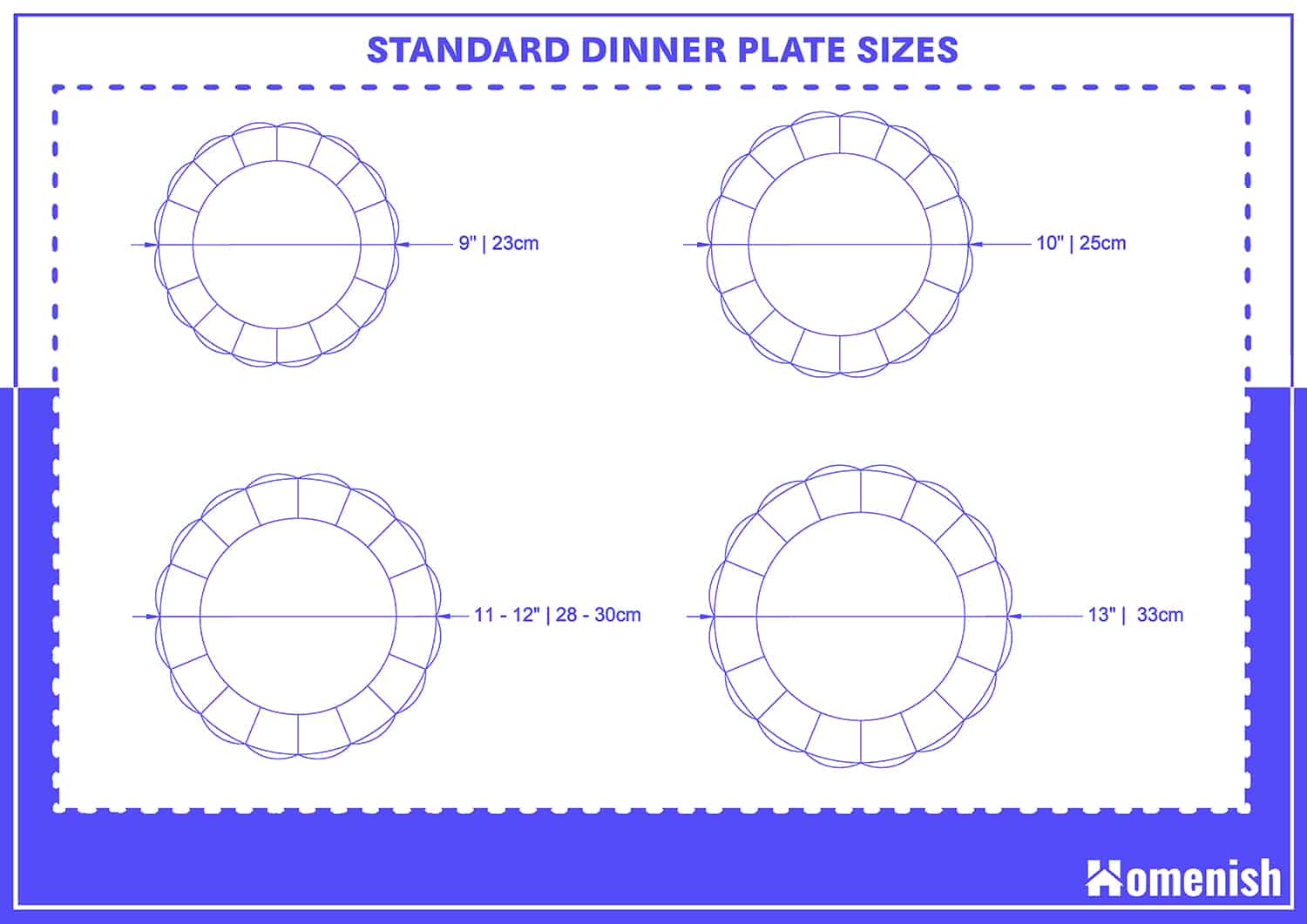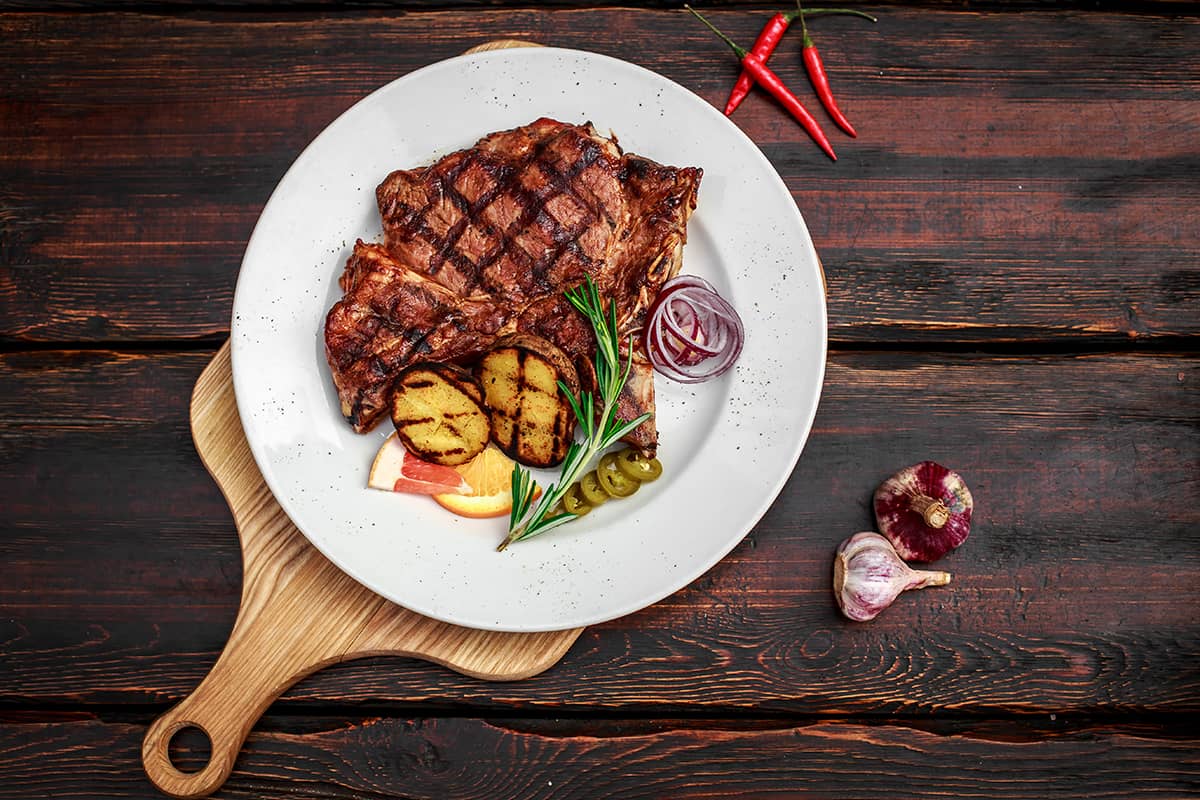Plate size is important. It largely dictates the amount of food we serve ourselves, affects how many guests we can fit at our dining table, and can be the difference between an easy or frustrating experience with the dishwasher. Here we will look at standard dinner plate sizes and things we should consider before settling on a size.
Considering that dishwasher racks where we clean our plates, and kitchen cabinets where we store our plates, all come in standard sizes, it would make sense that dinner plates also come in standard sizes to fit with this.
However, you are probably already aware that this is not the case. If you have ever looked at the sizes of plates available when purchasing a new dinner set, you’ll have noticed that the diameters can vary quite a bit.
If you’ve dined at plenty of different restaurants, you’ve probably also spotted that dinner plates not only come in various sizes but also different shapes. Some establishments serve their meals on square, rectangular, or oval-shaped dinner plates.
The shape and size of our dinner plates affect more than just the appearance of the meal, and it can even have an adverse effect on our health.
Dinner Plate Sizes
There is no singular standard dinner plate size, but most plate manufacturers will produce these common sizes listed below. The measurement shown is for the diameter of round dinner plates.
9 inches
This is the standard diameter of a dinner plate in Europe, though it may seem small if you are used to using 11 or 12-inch plates. If you are trying to have smaller portion sizes, this would be a good size dinner plate to opt for as you cannot overfill it.
10 inches
This is the recommended size for dinner plates for home use. It is big enough to provide a hearty but healthy portion, but not so big that you might be tempted into serving oversized meals.
11-12 inches
Many dinner plate sets targeted at homeowners are 11-12 inches in the US; however, this size is too big for everyday use and will likely result in oversized portions. If you have a set of dinner plates this size, you could reserve them for dinner parties or celebratory meals when you could serve larger meals as a treat.
13 inches
13-inch plates are not commonly used for home dining, although there are many restaurants that will use this size of plate to please their diners with huge portion sizes. This is suitable for occasional meals, but it is not a recommended size of dinner plate to use at home. This dinner plate size would likely cause frustration in the kitchen because you will struggle to fit it comfortably in the dishwasher rack.
Dinner Plate Size Considerations
Presentation
Food presentation is important because sight is one of the senses we use when eating meals. A meal that looks more appetizing is going to be appreciated and better received by those eating it. For this reason, the size of a dinner plate is important. If the dinner plate is too small, then the food is going to be spilling over the edges, and it will look like not a lot of thought has gone into the preparation. It could also make the meal difficult to eat without making a mess.
If a plate is too big, then one of two things is going to happen; the portion size will look out of proportion on the plate, and you will feel like you have been cheated out of some food, or you will increase the serving size to ensure a balanced look, but this could mean you are overfeeding yourself of your family.
Portion Size
The size of a plate is the main thing we use to decide our portion sizes. Rather than serving a set amount of food according to the weight or measurements, we serve an amount that fills the plate. If our plates are too big, this inevitably means we end up feeding ourselves portions that are too big, and in most cases, we will eat more food than we need and could become unhealthy as a result.
Around 50 years ago, the average size of a dinner plate was between 7 and 9 inches in diameter. Today, the average size of a dinner plate in the US is between 11 and 12 inches, with some restaurants having plates that measure as much as 13 inches across. On average, the size of dinner plates has increased by a whopping 36 percent in the space of just 5 decades.
If you want to control your portion sizes, then one of the best things you can do is buy more appropriately-sized dinner plates. In Europe, the average size of a dinner plate is 9 inches across, which could be one of the reasons that obesity is less of a problem compared with North America.
Storage
If your plates are oversized, then you are going to have issues storing them in standard-sized kitchen cabinets. Be sure to measure the storage space you have available before buying new dinner plates. The last thing you want is a kitchen cabinet door that won’t close properly because of protruding dinner plates.
Cleaning
If you have a dishwasher for cleaning your plates, then you need to buy dinner plates that are going to fit comfortably in the bottom rack while still allowing enough space for the top rack to slide into place. If plates are too tall, the dishwasher arms can not spin properly, and the cleaning will not be as effective.
Table Size
Most of us have been in a restaurant where the plates are so big the serving staff struggle to fit them onto the table along with the cutlery, condiments, and drinks. If you want to be able to comfortably feed your family at your dining table, buy dinner plates in a size that won’t crowd your tabletop.












